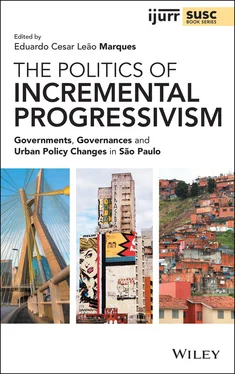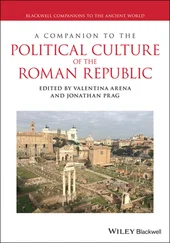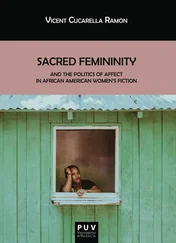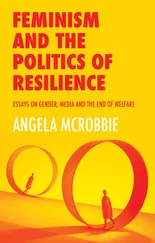The second part of the book focuses on the primary urban services delivered through contracts or concessions with private companies such as mobility and waste management. For historical reasons, mobility policies in São Paulo are divided among several agencies, both municipal (buses and traffic control) and state‐owned (a public subway company), while successive municipal institutions managed waste collection.
In Chapter 4, Carolina Requena studies traffic control policies since the 1970s. She argues that the insulation of the municipal traffic agency during its foundation period allowed it to establish and maintain an automobile priority paradigm that negatively impacted the performance of collective road transportation, run by a historically under‐empowered bureaucracy. This paradigm was consistent with mayoral priorities during the military period but became increasingly outdated under democracy. Recent administrations have confronted the highly regressive automobile paradigm and induced the traffic and bus control bureaucracies to interact and change, but not without intense intra‐ and inter‐organizational conflicts, giving rise to redistributive mobility policies that benefited mainly the poor, the majority of users of public transportation.
Bus services are the subject of Chapter 5by Marcos Campos. This policy is a municipal responsibility and has been assumed by private companies under contract or concession since the 1950s, with secondary direct public participation. The chapter focuses on the system's transformations since the 1980s, when private providers were increasingly regulated by a series of bureaucratic objects and public policy instruments. Operating as material references for representations of transported passengers and bus fare revenues, objects such as smart cards and GPS instruments occupy a central position in regulation. The main changes in redistributive policy occurred under left‐wing administrations, although sometimes using previous instruments created with other aims by right‐wing governments. The accumulation of these instruments over time reduced opacity and strengthened regulatory capacities, complementing the change of mobility paradigms mentioned earlier, with significant redistributive effects.
In Chapter 6, Daniela Costanzo analyses the governance patterns present in the São Paulo subway since the 1970s, a policy that became exclusively controlled by the state government. Owing to its very high investments, the availability of federal and international resources has always been the critical factor for this sector. Several different periods were identified, with massive federal and international investments in the 1970s, a decline in investments and technical capacities in the 1980s, and the entry of new (private) actors in the 1990s, not only as traditional consultants and builders, but also as partners in PPPs for construction and, more recently, operation. The same center‐right coalition controlled the state executive in an environment of low political competition during this period. The few redistributive decisions concerning tariffs and line construction in peripheral areas were decided in relatively closed processes involving politicians, bureaucrats, and private companies, resulting in the low presence of redistributive programs and actions.
Chapter 7concludes the study of services, where Samuel Godoy investigates the governance of waste management, with particular focus on its recent institutional reforms. The chapter characterizes the sector, summarizes its history and subsequently explores its institutional arrangements and private contractors. Through time, the municipality ceded the operation of services to increasingly more dominant private companies, but at the same time sought to strengthen its regulatory capacities by creating a concession model in which companies are forced to take more risks and make investments. The service is not charged directly, and redistribution may occur through service availability and quality, both heavily influenced by regulation. In general, state capacities and regulatory instruments were initiated under left‐wing administrations, although also strengthened during right‐wing governments, suffering the effects of differences in bureaucratic insulation and the scrutiny of controlling agencies.
The third part of the book discusses housing and land policies. In both cases, issues associated with the increase of land values through State actions are prominent, mobilizing the spatialized interests of developers, landowners, and local citizens. These policies have also mobilized social movements in the city.
Chapter 8, written by Eduardo Cesar Leão Marques and Magaly Pulhez, discusses housing policies. The chapter shows a slow but noticeable diversification of housing policy solutions in the city, in part associated with the gradual consolidation of the urban reform agenda nationally. In a process that cuts across different governments, some programs (easy redistribution) became consolidated alternatives to the traditional construction of new units for homeownership in peripheries, particularly in situ slum upgrading and regularization of irregular settlements. At the same time, social housing in central areas, social rent and active planning policies (hard redistribution) were much more present in left‐wing governments. This trajectory was marked by the slow accumulation of solutions, sometimes in latency, by actors within the community cutting across State and societal boundaries.
In Chapter 9, Telma Hoyler analyses the interactions between developers and public authorities, centered on the approval of development projects. The chapter identifies a recent change in land use approval in São Paulo, moving from an arrangement based predominantly on corruption to an interactive arrangement in which developers became more competitive (and empowered). At the same time, the State has also expanded its potential capacities to regulate. This institutional reform, implemented by a left‐wing administration, reduced information asymmetry to the State while providing a faster and more predictable approval process. Instead of structural capture, this trajectory represented the induction of governmental capacities by the private sector by placing the fight against corruption on the agenda.
Chapter 10by Betina Sarue and Stefano Pagin studies the evolution of urban renewal in São Paulo, the most critical single vector of urban change in recent years. These projects mobilize a specific instrument called Urban Operations, oriented towards the increase of land values and air rights production. The State plays a fundamental role in these through governance arrangements with politicians, bureaucracies, developers and sometimes civil society actors. This instrument was initially created for removing centrally located “favelas,” thus contributing to segregation and intraurban inequality. Urban Operations Consortia created an innovative instrument for urban renewal linked to the financialization of land that produces not only additional financial resources but also more discretionary funds, creating incentives for disseminating their use throughout the country. Even when including social housing and social participation (their most potentially redistributive elements), these represent a residual part and entail a dispute over their location within the bounded perimeter. UOCs have changed in format and redistributive capacity over time, mainly in left‐wing administrations.
Exploring this discussion of urban renewal, Betina Sarue analyses the governance of the Porto Maravilha project in Chapter 11. This is located in Rio de Janeiro and associated with the 2016 Olympic Games but was produced mainly through the use of instruments first created in São Paulo, as well as the London Olympics organizations. After several failed attempts, the project became viable in terms of its funding and policy coordination with the most significant public‐private concession of public services in Brazil, intense (institutional and financial) federal participation, and an institutional design derived from São Paulo's experiences. The chapter shows that focusing on large urban project institutions contributes to better understandings of their redistributive challenges, as well as enhancing comparative analyses of the mobilized policy instruments.
Читать дальше












